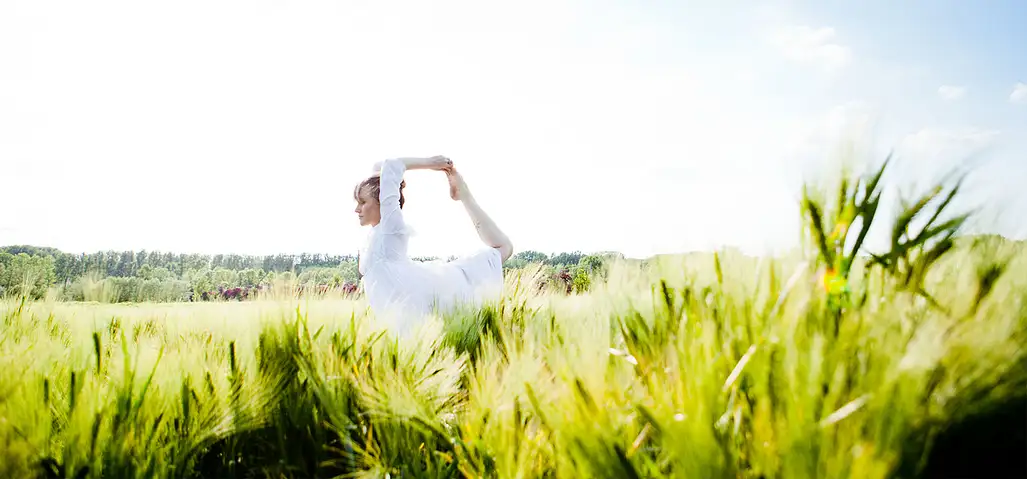Authentic ayurveda? That can only be found in the countries of its origin, India and Sri Lanka. Even today many ayurveda fans still think along those lines – and, therefore, go for their ayurvedic treatments somewhere in South Asia.
When I speak with these confident India lovers, I often hear various prejudices against European providers: “too expensive”, “the doctors and therapists are not classically trained”, “exclusively wellness – no therapy”, “fancy-schmancy” and more.
But is that really so? No!
One thing is certain, ayurvedic treatments in Europe differ in many ways from those in India or Sri Lanka. There are advantages and disadvantages, strengths and weaknesses on both continents. So the question is – which destination for treatment is optimal for your needs? What sets “Indian” apart from “European” ayurveda?
The focus in this issue is on ayurvedic treatments in Europe. Information on general conditions and strengths of European ayurveda are supplied. Be inspired and learn that good ayurveda doesn’t always involve a long journey.
European ayurveda versus Indian ayurveda
The doctrine of ayurveda is based on natural laws that have been perceived by mindful people through closely observing nature for thousands of years. About 2,000 years ago, these findings were written down in a number of compendia (samhita). These collections of texts still represent the scientific basis of this holistic medicine today.
There is only one classical ayurveda based on the samhita of the three most important authors – Charaka, Sushruta and Vaghbata. However, their works clearly point out the importance of adapting to local, temporal and sociocultural conditions. Thus, the application of ayurvedic knowledge differs and takes into account cultural and climatic conditions.
In India, ayurveda is a folk medicine that encompasses almost all diseases – including acute, infectious diseases. In Europe, ayurveda is not yet a statutory health care measure and is often used as a private service by people who wish to have complementary or ancillary treatment for chronic, functional and psychosomatic complaints. The preventative potential of ayurveda and its wealth of knowledge about a healthy and holistic lifestyle have also become widely known in Europe. More and more people are benefiting from ayurvedic tips on nutrition, lifestyle and stress reduction.
In the homelands of ayurveda, it is practiced daily and is part of the culture and the medical self-image. Indian spa facilities treat comprehensively, intensively and have a high number of personnel. Spa guests receive several treatments daily. The intensity of treatments and detoxification procedures (panchakarma) is high. In contrast, European spa facilities are more concerned with the regeneration of their clients. The therapies are milder and less stressful for the spa guest. Stress reduction, rest and relaxation in beautiful surroundings are usually paramount.
Ayurvedic treatments are now available throughout Europe. The spectrum ranges from out-patient spa clinics to small, family-run spa centres and hotel facilities to large private clinics or naturopathic departments in conventional medical facilities. And rising!
The seven strengths of European ayurvedic treatments
1. Hygiene & Standard
The hygiene and ambience in some traditional Indian establishments deviate from the European standard. Personal luggage can be correspondingly extensive and ranges from mosquito nets to acute medicines, intestinal enema utensils and disinfectants. Due to the much higher risk of infection through diarrhoea, skin and tropical diseases, guests who are especially infection-prone should carefully consider their treatment objectives and pay particular attention to the hygiene conditions on site when booking. Spa facilities close to a city can also impose a burden on the guest in need of rest, due to the high level of ambient noise in Indian cities.
Spa guests in Europe have far less to worry about and that relieves the burden. The location and the ambience of many facilities are beautiful and an extensive program is offered. Combine your ayurveda treatment with delicious food, daily yoga and exercise programs, beautiful experiences in nature, guided meditations, personal one-to-one discussions, inspiring lectures and exciting encounters. If you want peace and quiet, stay in your room. Your needs are paramount and are respected. You can choose from a converted farm to a 5-star luxury hotel, as desired.
2. Less need for adaption
Whilst adjusting to a different time and climate zone, sensory impressions and cultural encounters are factors not to be underestimated for the body and mind. We may have reached India after just a day’s travel by plane but will then need several days to acclimatise and get used to the changes. It’s only thereafter that your ayurvedic treatment should begin.
If your vacation is only 14 days or less, you should carefully consider whether it’s desirable to take on the long journey. Shorter treatments are the great strength of European providers. You arrive and can dive straight into the world of ayurveda. So sometimes a long weekend can unfurl enormous regenerative power.
For most of us, the rule is: more time, less money – more money, less time. Therefore, treat yourself to a shorter break at regular intervals and do not wait until you can afford longer-term treatments every few years.
The argument for cost saving can be refuted a touch. If you compare equivalent standards and include the lower travel expenses in the cost for the spa stay, the outlay differences between India/Sri Lanka and Europe are much less than you might think. For long-term stays, the potential savings are more noticeable.

3. Psychological care
This topic is particularly dear to me. In my twelve years of activity as head of ayurvedic treatments in Germany, I have, on a daily basis, experienced how powerfully physical cleansing can affect one’s mental-spiritual depth.
iStock.com / KatarzynaBialasiewicz
One’s mood during a treatment varies considerably. It can create painful and stressful thoughts, feelings and memories that spa guests can’t always handle so easily. Often questions of life’s meaning arise and prompt the desire for fundamental change. Compassion and professional support are needed at these moments.
This support is increasingly offered by European spa facilities, which is a clear differentiator for me as it is essential for a holistic transformation by the physical therapy. And that support is excellent.
4. Acute medical help
In my active treatment days, we had two main topics – oncology and cardiology. Both diseases are often associated with life-threatening conditions and are also accompanied by great anxieties. Without professional, acute medical care, available within a few minutes in an emergency, I would not have been able to treat ayurvedically many seriously ill people.
Ayurvedic therapies are time-tested and, therefore, quite safe. Yet unwanted reactions can never be completely ruled out. For this reason, I always advise high-risk patients to have their ayurveda treatments in Europe, which is well equipped for emergencies. The benefits of this support on demand give us the safe space in which we can work ayurvedically.
5. Easier communication
Many travellers know how difficult it can be to be properly understood by Indian or Sri Lankan doctors. Linguistic barriers are just as responsible as written misunderstandings. Most ayurvedic doctors have never visited Europe and only know our habits and ways of thinking through various media. Without a specialised translator, doctor and patient sometimes talk at cross purposes.
In Europe, you can communicate more easily. Your objectives, concerns and wishes are understood and taken into account when planning your therapy.
6. European-ayurvedic food
The food in India and Sri Lanka is a healthy treat but not always digestible or desirable by everyone. Some spa guests shy away from the intensity of the spices and do not always tolerate the daily consumption of legumes.
Many people interested in a treatment would like to have individual needs taken into account. The list is long and ranges from various intolerances (lactose, gluten, fructose) to personal diets such as paleo, low carb or veganism. Taking all these wishes into account and harmonising them with ayurveda is a great challenge that can overwhelm many Asian institutions. European spa houses can often adapt better. You can also inquire if your dietary needs can be taken into account before travelling to your preferred hotel.
In many European institutions spa guests can learn in workshops how to use local ingredients to create meals quickly for an everyday, healthy ayurvedic life at home. Helping people to help themselves!
7. Regeneration – Wellness – Lifestyle
Many spa guests long for a break and rest. Away from the hustle and bustle of daily life, from day-to-day pressures, from expectations, from obligations.
Ayurvedic treatments in the form of classic panchakarma can be exhausting, even if they lead to very good results. The early morning wake up, the activating treatments, the purges and the phased spartan spa meals are exhausting. Panchakarma first takes energy before it provides new, sustainable energy. There are also contra-indications that prohibit classical panchakarma.
Ayurvedic treatments in European institutions are more based on the need for their guests to be rested. The density of therapies is lower and the intensity of cleansing milder. The focus here is on increasing well-being. Ayurveda and wellness are not contradictory. Anti-aging comes from ayurveda, which calls it rasayana.
The three central treatment objectives
European spa facilities offer treatments that can be divided into three groups:
• Treatments for cleansing/detox – classic panchakarma.: Panchakarma is largely a “light“ version in Europe with a shorter duration of treatment, fewer and milder removals of toxins. Nevertheless, it can still achieve significant relief.
• Treatments for regeneration and rejuvenation – classic rasayana cures: These treatments are used to refine the body after it has been cleansed. Weakened structures are nourished and malfunctions regulated.
• Treatments for wellness and beauty – classic saundarya treatments: Ayurveda can also just make one feel good, even without in-depth treatment. Gentle rubbing with fragrant oils, skin care, a soft touch and soothing food all delight. Recently, some providers have also offered retreats, in which, in addition to ayurvedic treatments, the focus is on training the mind through meditation and yoga.
My personal conclusion
Classic ayurvedic treatments are carried out in India and Sri Lanka in a highly professional and effective way. For some spa guests, the spatial and cultural distance from home is an essential part of the therapy and provides a relaxed holiday feeling. Particularly intensive hands-on therapies and intensive detoxification treatments receive the best possible care with impressive results. The countries of origin are prepared for and specialise in long-term spa stays. A trip to India or Sri Lanka is always something special and combines happily with a warm climate. The warmth and the light mean rest and recreation. Above all, they are a welcome change if you want to escape the winter in Europe and they have a mood-enhancing and invigorating effect. The encounter with a completely different culture, in which spirituality is a part of everyday life, creates unforgettable experiences. Local nature provides impressive experiences, which are perhaps connected to a stay by the sea, and they enliven us and round off a relaxing holiday.
Holistic ayurvedic treatments are offered with a highly perceptive touch in Europe. What’s on offer includes individual and holistic programs of varying duration for beginners and the experienced. Even short stays for a quick break are highly professional. Infection-prone or critically ill people can be treated ayurvedically while being safely monitored by conventional medicine.
Psychosomatically burdened guests are cared for physically and mentally. Personal contact is considered an essential part of treatment success.
Ideal: outpatient consultation in advance.
Get an individual consultation in an outpatient ayurvedic practice from an expert who may already know you. Discuss your personal situation and state of health, your short-term goals, your time constraints and your likes as well as dislikes. Trust your therapist and discuss openly any questions, wishes and fears you may have. Then, after a detailed consultation with your therapist, choose the appropriate spa facility with their advice.
It is beyond question that classical ayurveda pulsates in India and Sri Lanka – however, holistic ayurveda ripens in Europe and is exemplified in many spa centres.
In one of the next issues, we will supply information on ayurvedic cures in India, the homeland of ayurveda.


 Christine Love Hewitt
Christine Love Hewitt 






